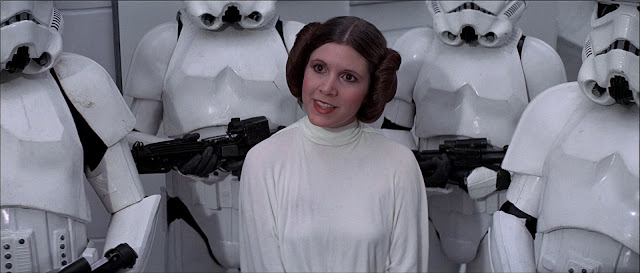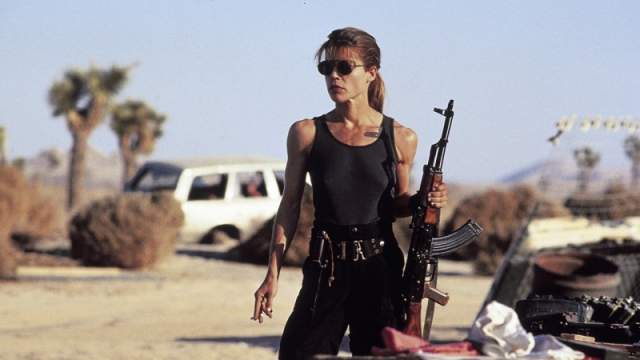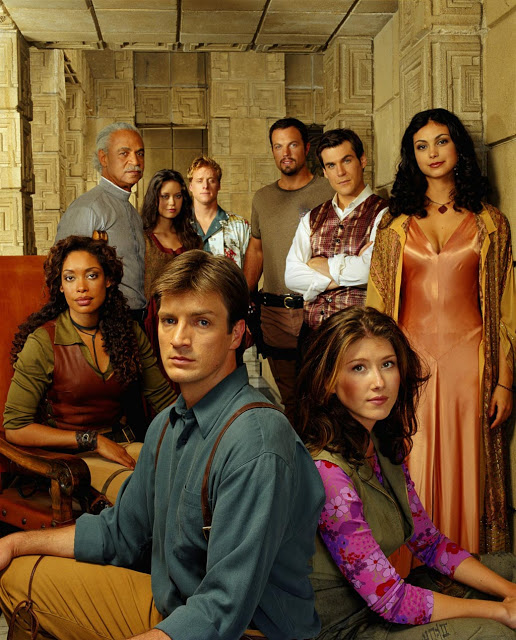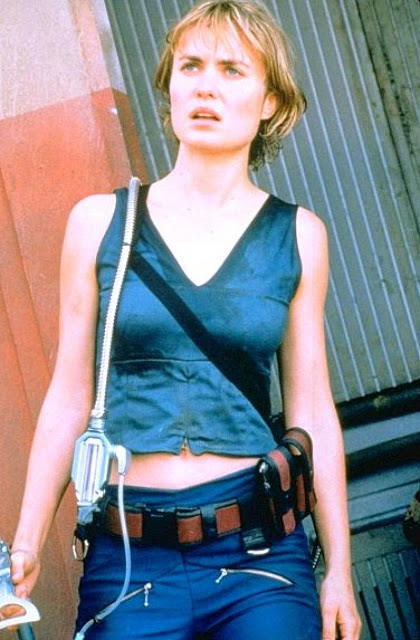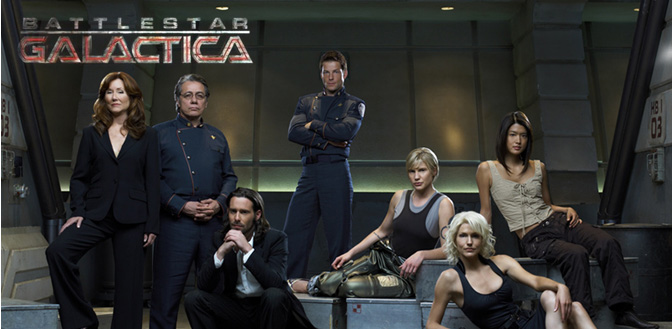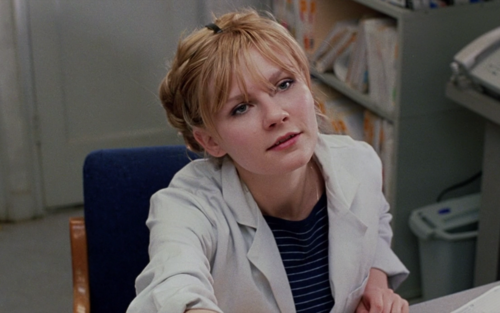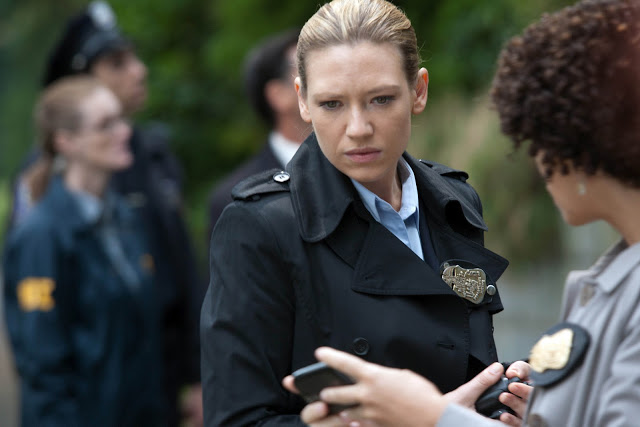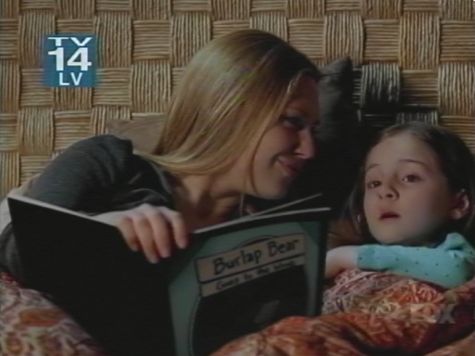Tag: Strong Female Characters
Women in Science Fiction Week: Princess Leia: Feminist Icon or Sexist Trope?
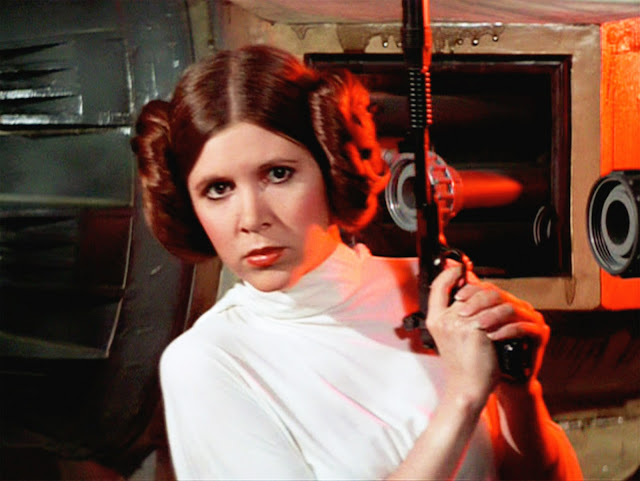 |
| Princess Leia Organa (Carrie Fisher) in Star Wars Episode IV: A New Hope |
When I was a young girl, Star Wars was my favorite movie. I’ve watched it more times than any other film. Premiering in 1977, the same year I was born, the epic sci-fi space opera irrevocably changed the movie industry. Beyond battle scenes, or the twist of Vader being Luke’s father, it impacted my childhood. Because Princess Leia was my idol.
Princess Leia:Governor Tarkin, I should have expected to find you holding Vader’s leash. I recognized your foul stench when I was brought on board.Governor Tarkin:Charming to the last. You don’t know how hard I found it, signing the order to terminate your life.Princess Leia: I’m surprised that you had the courage to take the responsibility yourself.Governor Tarkin:Princess Leia, before your execution, I’d like you to join me for a ceremony that will make this battle station operational. No star system will dare oppose the Emperor now.Princess Leia: The more you tighten your grip, Tarkin, the more star systems will slip through your fingers.
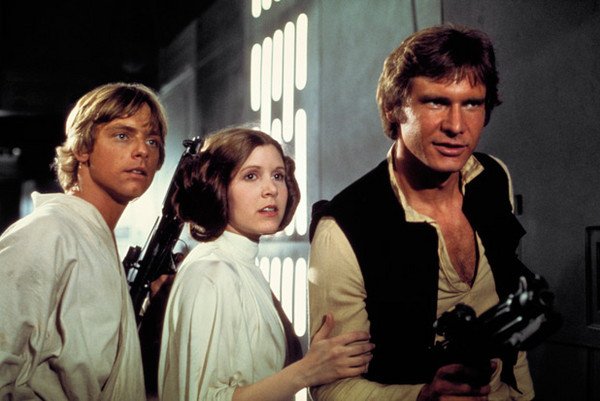 |
| L-R: Luke Skywalker (Mark Hamill), Leia (Carrie Fisher) and Han Solo (Harrison Ford) in Star Wars Episode IV: A New Hope |
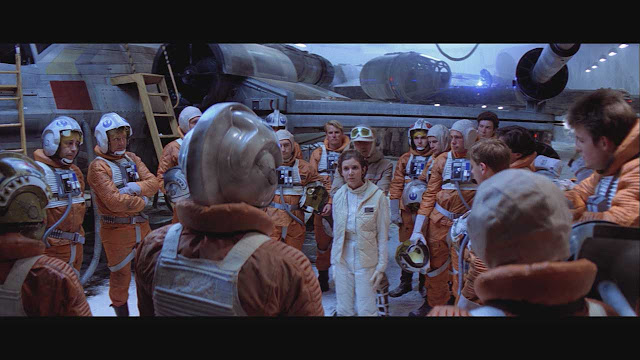 |
| Princess Leia advising Rebel pilots in Episode V: The Empire Strikes Back |
 |
| Wicket the Ewok and Princess Leia in Episode VI: Return of the Jedi |
“In Star Wars, a boy can grow up to be a knight, or a wizard. But if you’re a girl, you have one good role model…But you better be born a princess or good at space hooking cause those are your options.”
Why ‘Star Wars’ Is Secretly Terrifying for Women — powered by Cracked.com
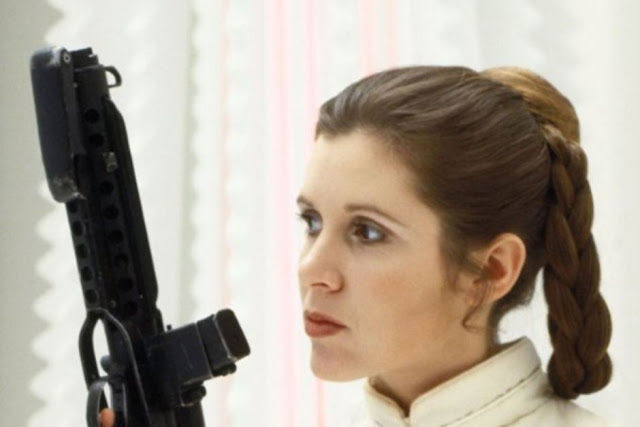 |
| Princess Leia in Episode V: The Empire Strikes Back |
Women in Science Fiction Week: Is ‘Terminator’s Sarah Connor an Allegory for Single Mothers?
 |
| Sarah Connor (Linda Hamilton) in Terminator 2: Judgment Day |
This post previously appeared at Bitch Flicks on May 25, 2012.
Mothers are supposed to be everything to everyone. Sadly, society often stigmatizes, vilifies and demonizes single mothers. Single moms are blamed for “breeding more criminals.” Single parenthood is criminalized and “declared child abuse.” On top of that, “almost 70% of people believe single women raising children on their own is bad for society.” WTF? Seriously?? Wow. Way to be misogynistic people.
[…]
Women in Science Fiction Week: In Defence of Jo Grant, Beyond Screams and Miniskirts: The Women of Classic ‘Doctor Who’
| Dr. Shaw, being serious |
| Jo Grant, being a nature child |
| Jo Grant is unimpressed by your gun, Master |
| Jamie McCrimmon does not know the meaning of personal space |
| Most of the Doctor’s companions, Old and New (if you don’t include non-televised media) |
Barrett Vann is an English and Linguistics student at the University of Minnesota. An unabashed geek, she’s into cosplay, literary analysis, high fantasy, and queer theory. After she graduates in December, she hopes to tackle grad school for playwrighting or screenwriting, and become one of those starving artist types.
Women in Science Fiction Week: A Feminist Review of ‘Prometheus’
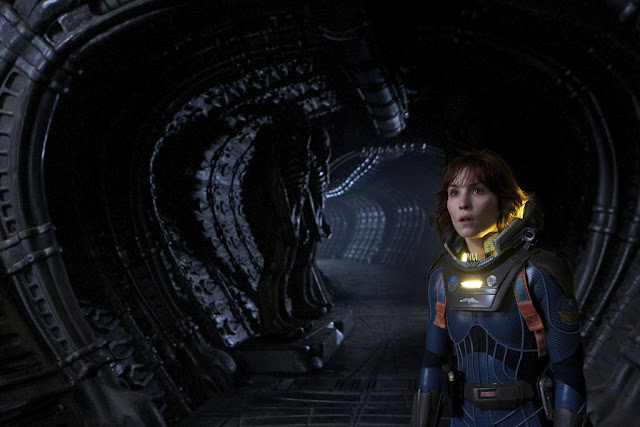 |
| Noomi Rapace as Dr. Elizabeth Shaw in Prometheus |
Guest post written by Rachel Redfern previously appeared at Bitch Flicks on June 20, 2012 and was originally published at Not Another Wave. Cross-posted with permission.
The prequel and spinoff for the classic film Alien has as much feminist food as its precursor did, albeit slightly less groundbreaking, though we can’t fault it for that: Alien did give us the first female action hero in Sigourney Weaver’s portrayal of the irrepressible Ripley.
Women in Science Fiction Week: The Strong, Intelligent and Diverse Women of ‘Firefly’ and ‘Serenity’
 |
| Cast of Firefly and Serenity |
Guest post written by Janyce Denise Glasper.
“Why do you keep writing strong female characters?”
“Because you’re still asking that question,” Joss Whedon quips.
 |
| The women of Firefly and Serenity — L-R: Jewel Staite (Kaylee), Summer Glau (River), Morena Baccarin (Inara), Gina Torres (Zoe) |
 |
| Zoe (Gina Torres) |
“Love. You can learn all the math in the ‘verse… but you take a boat in the air that you don’t love… she’ll shake you off just as sure as the turn of the worlds. Love keeps her in the air when she ought to fall down… tells you she’s hurting before she keels. Makes her a home.”
 |
| Kaylee (Jewel Staite) |
 |
| Inara (Morena Baccarin) |
Serenity means the state of being calm and untroubled — Inara Serra embodies the definition. The poised, tranquil companion, or in other words a courtesan, has illustrious skills beyond sensual grace. Softly spoken and wisely engaged, she battles with tongue more so than weapon. An expert with combat and a bow and arrow and often a vital aide in fighting the good fight, she gets knocked around a bit, but that doesn’t stop her from continuing to join in the battle of Malcolm verses The Operative, licking her wounds and going back for more to protect nearly brutally defeated captain.
 |
| River (Summer Glau) |
 |
| The women of Firefly and Serenity — L-R: Gina Torres, Summer Glau, Morena Baccarin, Jewel Staite |
Women in Science Fiction Week: Thoughts on Strong Female Characters: Carolyn Fry from ‘Pitch Black’
While Fry takes the reins of the group on the deserted planet by default, the one thing that drives her bravery is her terrible mistake — attempting to eject the passengers in cryogenic sleep to lighten the load of the spaceship before it crashed, stopped from doing so by the more conscientious navigator who died as a result, earning her a lot of resentment from the group, their mistrust eventually pushing her to fight for her leadership position more fiercely. I don’t particularly consider that a negative point, I see a person deeply ridden with guilt, antagonists willing her to fail, Riddick keenly watching her every move, reacting to her willingness to risk her safety for the sake of the others with amusement. I see a lot of a pressure on a person who is not particularly skilled to handle the task before her, but she pushes on in spite of that.
Rhea Daniel got to see a lot of movies as a kid because her family members were obsessive movie-watchers. She frequently finds herself in a bind between her love for art and her feminist conscience. Meanwhile she is trying to be a better writer and artist and you can find her at http://rheadaniel.blogspot.com/.
Women in Science Fiction Week: Procreation at the End of Civilization: Reproductive Rights on ‘Battlestar Galactica’
 |
| The cast of Battlestar Galactica |
Leigh Kolb is an English and journalism instructor at a community college in rural Missouri, and has an MFA in creative nonfiction writing. She lives on a small farm with her husband, dogs, chickens, and garden, and makes a terrible dinner party guest because all she wants to talk about is feminism and reproductive rights.
Women in Science Fiction Week: Mary Svevo: ‘Eternal Sunshine of the Spotless Mind’s Other Strong Female Character
Warning: spoilers ahead!!
Eternal Sunshine of the Spotless Mind is precisely the kind of science fiction movie I like: a film in which the futuristic, scientific aspects are so well integrated into the plot that there is never a moment when the premise is implausible, a moment in which the audience is compelled to step outside the world of the film and remark, “I don’t believe it.” The viewer’s willingness to accept that world, and even to recognize it as her own, is part of what makes the very best films of the genre so disquieting. I realize that this isn’t everyone’s opinion of the genre, but mine was formed young. I was ten when my dad first let me watch Jurassic Park, even though it was released some three years prior. I wasn’t the type of child to watch potentially frightening movies, and he only let me watch it because he wanted me to see a movie with a lead female scientist. Curiously enough –and much to my dad’s surprise – what terrified me wasn’t the CGI dinosaurs, or the deadly snakes and the electric fences, but rather the concept of the film. The fact that it wasn’t so difficult for me to imagine a world in which a place like Jurassic Park could exist. I’d been to zoos and theme parks; Dolly the sheep had just been cloned. I could believe that sometime, in the not-so-distant future, a similar theme park might not be so far-fetched. Consequently, I was petrified. Eternal Sunshine of the Spotless Mind lacks the outright scare value of a film like Jurassic Park or Alien, but still delivers an unsettling punch.
When Eternal Sunshine of the Spotless Mind made its debut, critics and audiences alike were charmed by Charlie Kaufman’s intelligent,engaging screenplay, which marries an enjoyable love story with the kind of philosophical introspection that viewers have come to expect from a Kaufman film. The “spotless mind” of the title, a reference to Alexander Pope’s poem Eloisa to Abelard, refers to the premise of the film: people choosing to alter their memories through Lacuna, a medical company which performs “targeted memory erasure” designed to erase only specific people or events from the patient’s memory. Performed through a mixture of science and art, the procedure relies on “mapping” the subject’s brain when the specific memories are triggered, and then selectively erasing those memories while the patient is sedated. Patients bring any objects associated with the undesired memories to the company, which then disposes of them, so that potential triggers, which could compromise the efficacy of the erasure, are minimized. Similarly, patients’ friends who might inadvertently mention the undesired memories are made aware of the situation and requested not to mention them in the subject’s presence.
 |
| Kate Winslet as Clementine in Eternal Sunshine of the Spotless Mind |
Smart directorial and script decisions carry the argument against Mary further. There’s a vibrancy of color to Clementine’s scenes – even the ones that take place outside of Joel’s memory – that’s wholly absent in Mary’s. Clementine’s clothes, particularly a favorite orange sweatshirt and ever-changing hair color, are more visually arresting than are Mary’s sedate, professional daywear. Clementine’s scenes are marked by a sense of urgency and excitement. Mary’s dancing scene, the only one in which she could be described as“energetic,” has more of a frenzy about it. Clementine is exuberant and effervescent; even Mary’s exuberant moment is tempered by a degree of desperation. She’s only having fun because she’s stoned.
Like Clementine, Mary is the pursuer, not necessarily the pursued, though both have eager men interested in them. In Clementine’s case, Patrick quite obviously pursues her, using questionable techniques involving objects and memories filched from Joel while his memory is being replaced. Mary is the object of Stan’s affection, and it’s even implied that they live together; she only has eyes for Dr. Mierzwiak, whom she attempts to woo with poetry. The film presents Mary’s attempts to charm Dr. Mierzwiak as the counterpoint to Clementine’s successful pursuit of Joel. Where we see an image of empowerment in Clementine’s efforts, the kind of go-get that is frequently attached to male roles, Mary’s are sadly pathetic and desperate. We pity Mary as she recites her quotes to Dr. Mierzwiak and wince along with him when she refers to “Pope Alexander.” He reacts indulgently, as if she’s a child in need of congratulations and encouragement for telling him things he already knows,and so do we. The set up of the shot helps in this regard: Mary is seen from a distance, curled up in an arm chair, while Dr. Mierzwiak is seen in close profile, typing away at the computer to fix errors in Joel’s erasure. She’s superfluous; he’s integral. We are as unimpressed as he is with her quotation-book poetry (and in the end, it’s clear that he might have heard these same quotes during their previous relationship). Given what happens next, Mary’s quote choices are eerily prescient. She’s the one who comments on the beauty of the work, about art and science, in her dreamy voice, and considers what the targeted memory erasure means for their clients, and who ultimately makes the difficult ethical choice to release the company’s files when she discovers the coercion in her own erasure. Why can’t Mary be a thinker, too?
The viewer takes for granted that Clementine will have something of a philosophy, even if that philosophy happens to be, “I’m not a concept,” a phrase which reminds us outright that while it’s tempting, she’s not about to be boxed in to a label denoting her as, for want of better shorthand, an archetypal “Manic Pixie Dream Girl.” She is capable of making that statement about her identity. One never imagines that Mary would to do anything like that, and indeed, the film actively argues against that expectation for her. What’s interesting, however, is that the film originally provided for more of Mary’s back story.
In the cinematic release, Mary never confronts Dr. Mierzwiak about her discovery, so we never have the opportunity to see her speak up for herself, thus denying her character the kind of assertiveness that so characterizes Clementine. With the traumatic discovery of her abortion (at the urging of Dr. Mierzwiak) excised from the film, Mary’s decision to release the documents becomes more of a convenient deus ex machina than a manifestation of her agony: she mails out the files in a fit of pique, motivated by anger, so that there’s a plausible narrative reason for Joel and Clementine to make another attempt at their relationship. It makes for a better, more polished and satisfying ending for the film, but I’m glad that the director’s commentary mentions Mary’s sad tale.
Earlier in Pope’s long poem, he writes: “Though cold like you, unmov’d and silent grown/ I have not yet forgot myself to stone.” If Clementine knows her own mind and her own worth from the outset, Mary figures it out as the film progresses. Despite everything, including the Lacuna intervention-by-brain-damage, Mary manages not to forget herself entirely. The only disappointment with Eternal Sunshine of the Spotless Mind is that the film ends just as we’re starting to find out who she is.
Amanda Civitello is a freelance writer based in Chicago and Northwesternalum. She contributed a review of Daphne for the Bitch Flicks LGBTQI themeweek. You can find her on Twitter at @amcivitello and at amandacivitello.squarespace.com.
Women in Science Fiction Week: Deciphering Island Patriarchy: Finding Feminism in ‘Lost’
Women in Science Fiction Week: Is ‘Prometheus’ a Feminist Pro-Choice Metaphor?
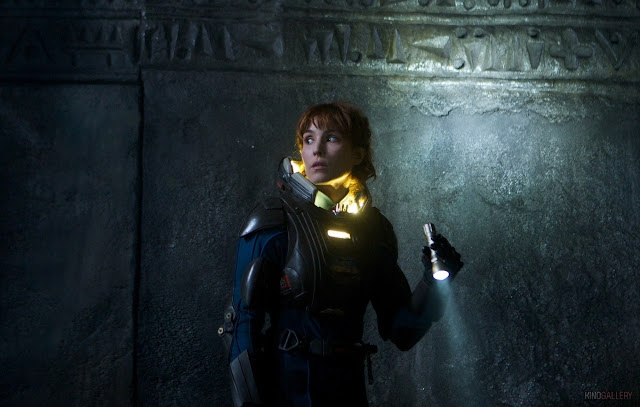 |
| Noomi Rapace (Dr. Elizabeth Shaw) in Prometheus |
This post written by staff writer Megan Kearns originally appeared at Bitch Flicks on June 12, 2012.
[…]
[…]
Women in Science Fiction Week: Why Olivia Dunham on ‘Fringe’ Is My Favorite Female Character on TV
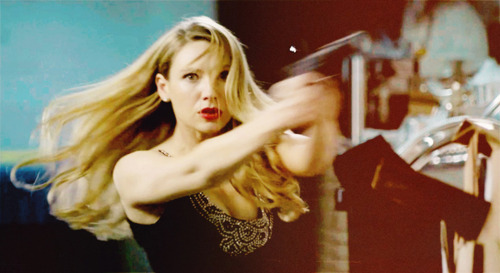 |
| Olivia Dunham (Anna Torv) on Fringe |
She often puts herself in harm’s way to protect those around her and is willing to do anything necessary in the name of justice and fringe science (including having electrical equipment embedded in her skull and then being submerged in an isolation tank.
 |
| Olivia Dunham (Anna Torv) on Fringe in isolation tank |
What I love most is her seemingly inability to be made vulnerable by villains. In several episodes she is rendered unconscious and kidnapped, however, she is hardly ever saved by other people. Although the other members of Fringe are looking for her, she’s the one to smash something against someone’s head or brandish a scalpel as a deadly weapon in order to escape. And it’s not that she busts down doors, guns blazing, but that she knows the appropriate time to do so, or when a lock pick and stealth will suffice.
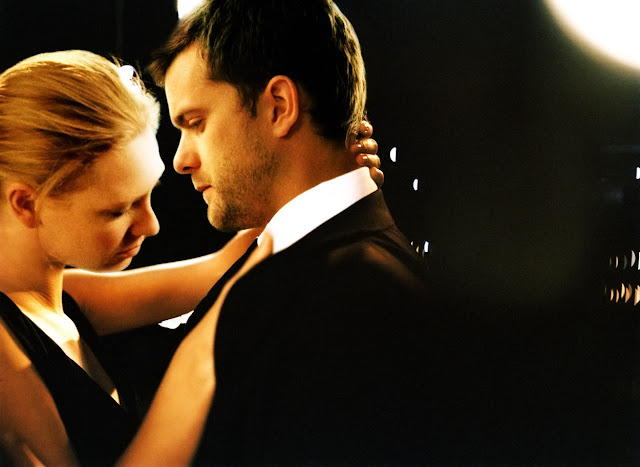 |
| Olivia (Anna Torv) and Peter (Joshua Jackson) on Fringe |
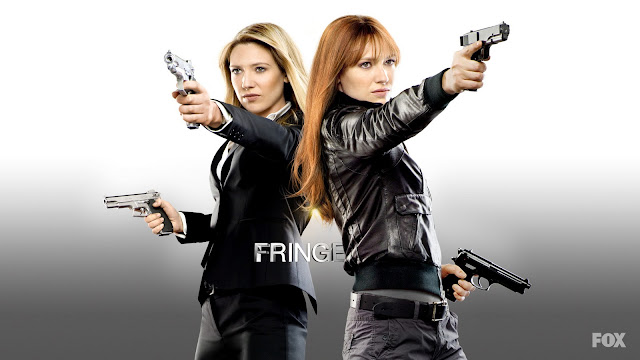 |
| Olivia and Fauxlivia (both played by Anna Torv) on Fringe |

